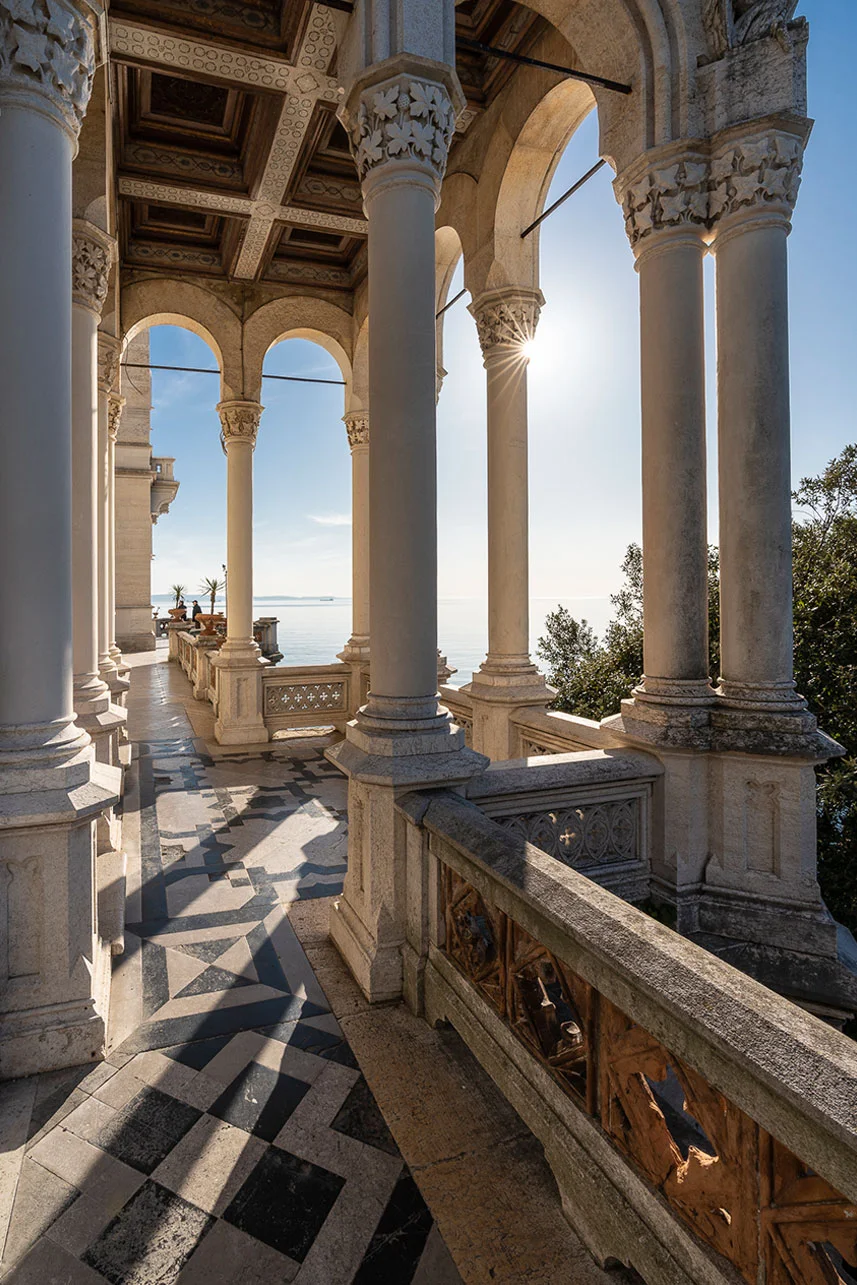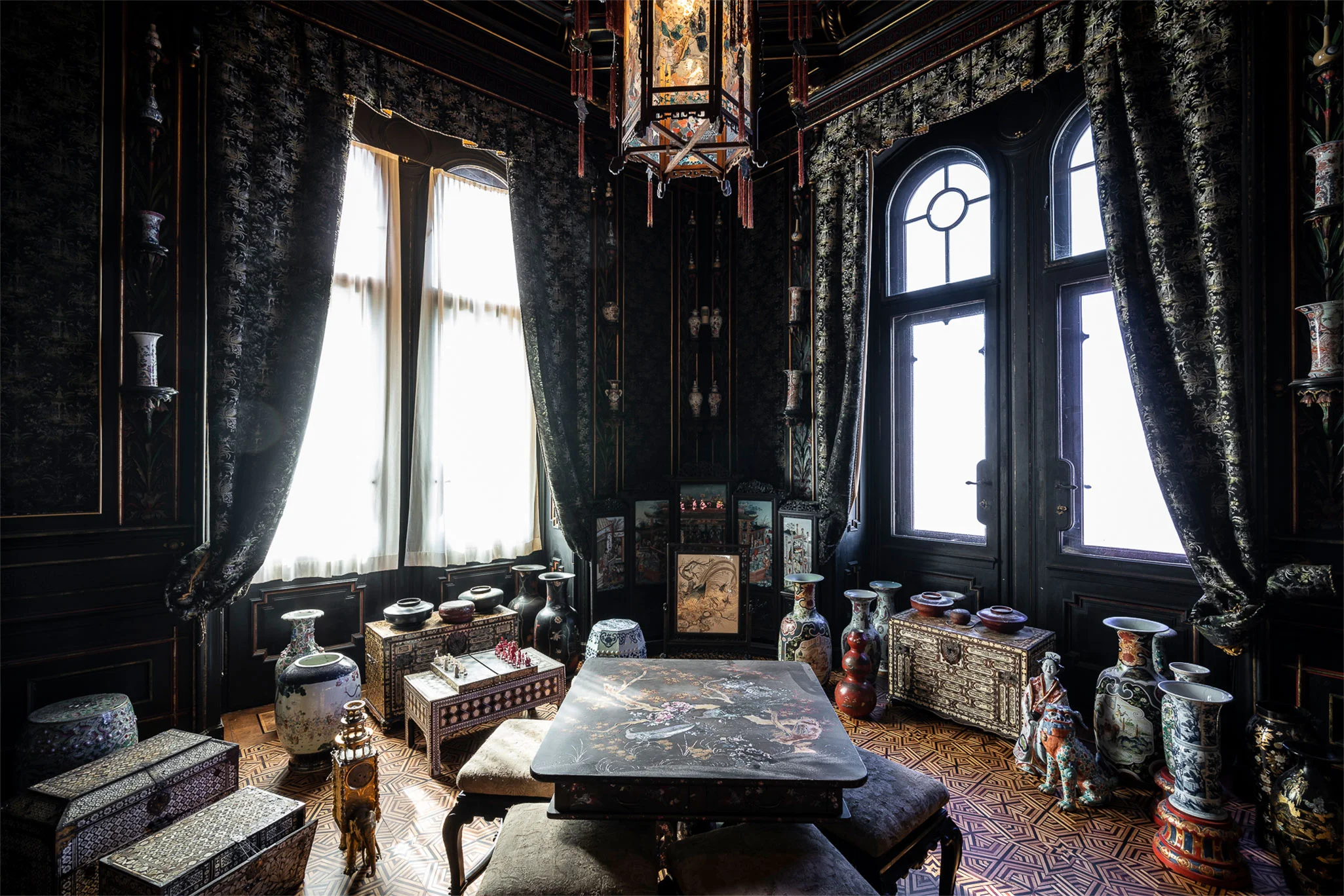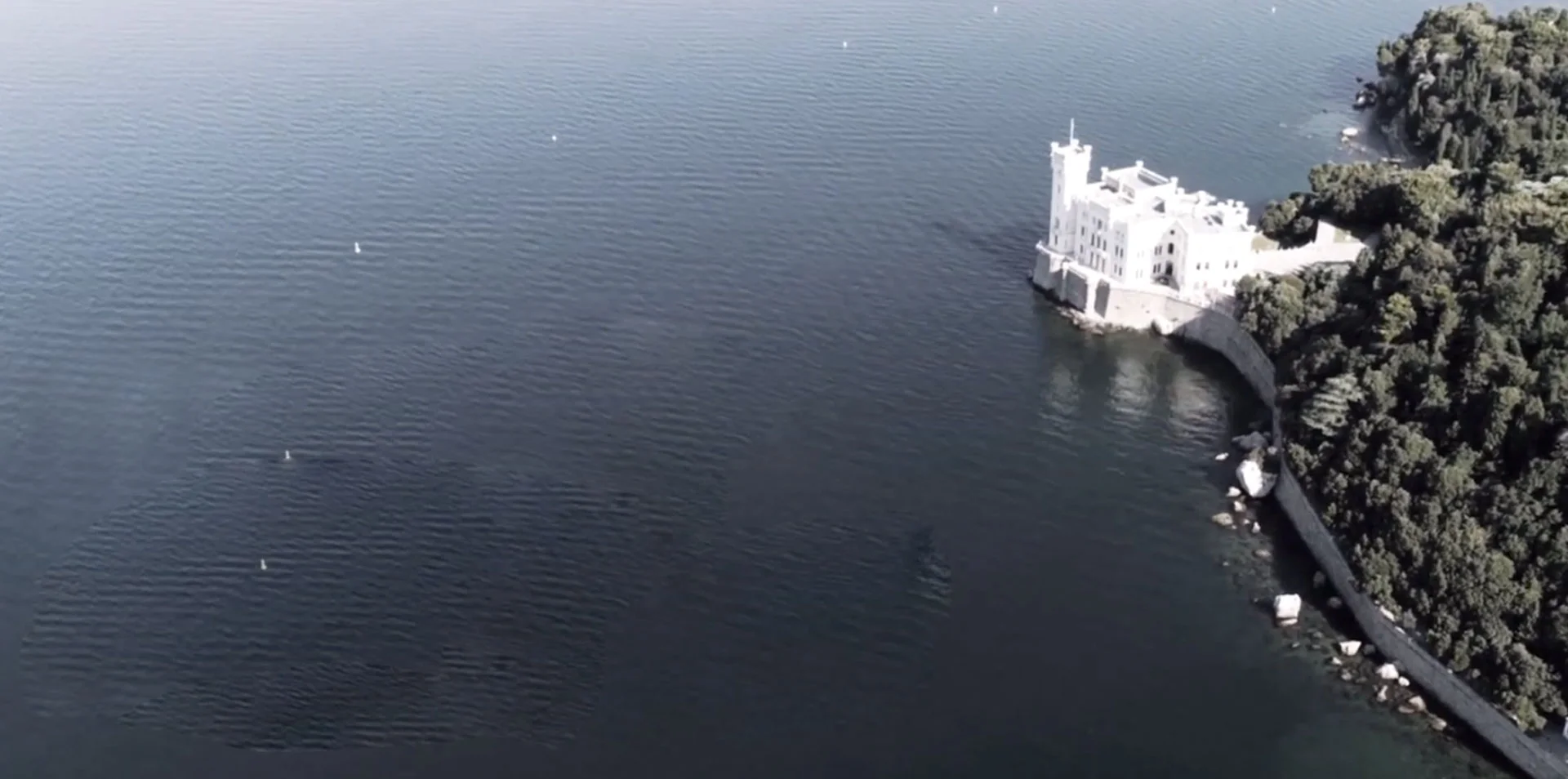The commitment to ensuring the broadest possible access to cultural heritage is particularly important to the Management of the Museo Storico e il Parco del Castello di Miramare.
Numerous initiatives have been taken in this regard, starting with the signing in September 2018 of a memorandum of understanding with the Office of the Deputy Secretary to the Presidency of the Council of Ministers delegated to Family and Disability issues and the Friuli Venezia Giulia Region. The ceremony was also attended by then Prime Minister Giuseppe Conte.
Among the projects the Management has worked on in recent years, one of particular importance is the Castle’s internal lift, which also allows people with reduced mobility to access and visit the second floor of the museum (a courtesy wheelchair is also available upon request).
Other accessibility initiatives carried out in recent years include: an electric shuttle service for visiting the Park; the remaking of the external signage featuring QR codes (also the signage inside the museum will soon be completed); and the design of a tactile tour route for blind and visually impaired people, with specific educational aids.
Other available media include the 3D model of the Castle and copies of the volume Una giornata con gli arciduchi (A Day with the Archdukes): this is a tactile guidebook to the Museum designed to be accessible to as many different types of readers as possible, especially children and young people. Thanks to the presence of tactile illustrations in relief and texts printed in large characters and Braille, it can also be used by blind and visually impaired readers. The Easyreading© font used is highly readable and particularly suitable for readers with dyslexia. These media are available free of charge on request.
ACCESSIBILITY TO THE CASTLE
The museum can be visited by users with disabilities or reduced mobility due to the absence of architectural barriers.
If necessary, the museum has a courtesy wheelchair, which is also of suitable size for use in the lift.
ACCESSIBILITY TO THE PARK
The Viale dei Lecci—Holm Oak Lane—, which connects Porta della Bora (Bora Gate) to the castle, can be travelled by wheelchair or, if necessary, by vehicles carrying people with disabilities. The Stables—Ex Scuderie—, the Castle Yard—piazzale del Castello—, and the terrace surrounding the building are also easily accessible to users with reduced mobility or in wheelchairs. To reach other areas of the Park, e.g., parterre, greenhouses, and castelletto, the Museum Management can be contacted and access by vehicle from Via Beirut can be arranged.
The tactile panels are freely accessible in the Park. They consist of four multilingual tactile panels placed along the visitor route, complementing the recently renovated signage system. The panels include text content in Braille, Italian and English with raised characters and tactile maps.
PARKING
In the parking area, at the beginning of the driveway to the Castle, near Porta della Bora, two places are reserved for differently abled visitors of castle and park. Parking of vehicles is free of charge upon displaying the special mark for the entire duration of the visit to the site
In addition, in accordance with Italian Legislative Decree No. 285 of 30 April 1992, article 188, paragraph 3-bis, states “Vehicles serving people with disabilities, holders of the special mark in accordance with Article 381, paragraph 2, of the regulation, are allowed to park free of charge in parking areas for pay, if the spaces reserved for them are already occupied or unavailable”. The service is reserved exclusively for visitors to the castle and the park for the entire duration of the visit.
The lane leading to the castle (Viale dei Lecci), which is about 300 metres long, can be travelled by wheelchair or vehicles carrying persons with disabilities or reduced mobility who have requested to arrive directly at the museum entrance. The Guardian Service can be contacted via the intercom located to the left of the Porta della Bora (Bora Gate) to lower the mobile bollard placed at the entrance of Viale dei Lecci and access directly the area of the Castle yard.
ENTRANCE TO THE MUSEUM
European Union citizens with disabilities who demonstrate their membership in social welfare services (Italian Ministerial Decree No. 239 of 20 April 2006) are entitled, together with their family member or other accompanying person, to free entrance to the museum;
EDUCATIONAL SERVICES AND MATERIALS
Currently, the Museum has some braille educational aids for visiting the Castle and Park, prepared in collaboration with the Rittmeyer Institute of Trieste. The educational aids, accompanied by tactile maps, are available free of charge in Italian, English and German upon request. The Museum also has a 3D scale model of the Castle, created in collaboration with the City of Trieste.
To book these aids and qualified assistance, you can contact the Educational Services Office of the Museo Storico e il Parco del Castello di Miramare.
The Museum Management plans to design a system of multilingual tactile information panels for the Park and redesign and update the Castle’s information and educational aids in the coming months. Special attention will be paid to materials intended for cultural assistance for people with visual and cognitive disabilities.



